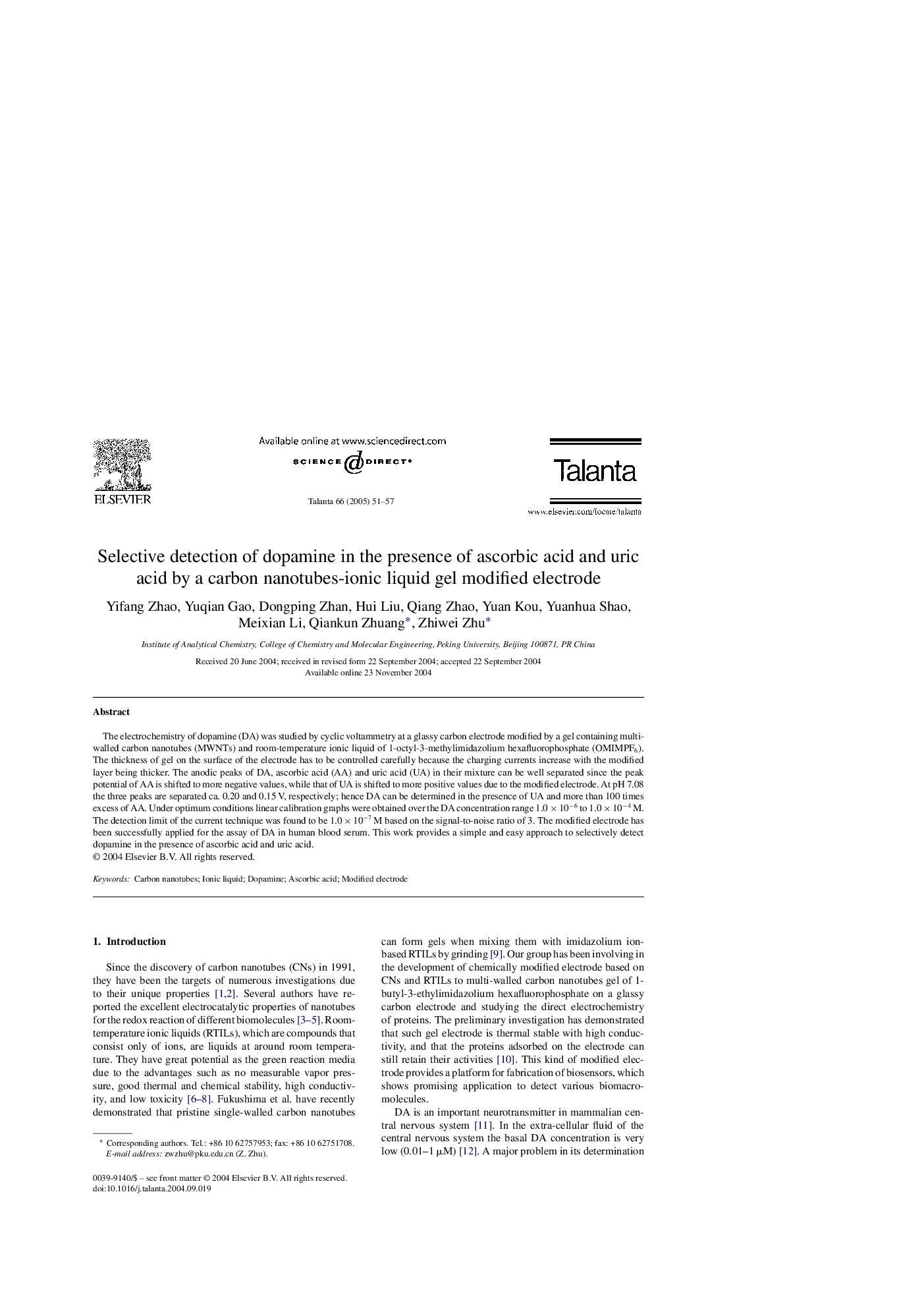| Article ID | Journal | Published Year | Pages | File Type |
|---|---|---|---|---|
| 10562910 | Talanta | 2005 | 7 Pages |
Abstract
The electrochemistry of dopamine (DA) was studied by cyclic voltammetry at a glassy carbon electrode modified by a gel containing multi-walled carbon nanotubes (MWNTs) and room-temperature ionic liquid of 1-octyl-3-methylimidazolium hexafluorophosphate (OMIMPF6). The thickness of gel on the surface of the electrode has to be controlled carefully because the charging currents increase with the modified layer being thicker. The anodic peaks of DA, ascorbic acid (AA) and uric acid (UA) in their mixture can be well separated since the peak potential of AA is shifted to more negative values, while that of UA is shifted to more positive values due to the modified electrode. At pH 7.08 the three peaks are separated ca. 0.20 and 0.15Â V, respectively; hence DA can be determined in the presence of UA and more than 100 times excess of AA. Under optimum conditions linear calibration graphs were obtained over the DA concentration range 1.0Â ÃÂ 10â6 to 1.0Â ÃÂ 10â4Â M. The detection limit of the current technique was found to be 1.0Â ÃÂ 10â7Â M based on the signal-to-noise ratio of 3. The modified electrode has been successfully applied for the assay of DA in human blood serum. This work provides a simple and easy approach to selectively detect dopamine in the presence of ascorbic acid and uric acid.
Related Topics
Physical Sciences and Engineering
Chemistry
Analytical Chemistry
Authors
Yifang Zhao, Yuqian Gao, Dongping Zhan, Hui Liu, Qiang Zhao, Yuan Kou, Yuanhua Shao, Meixian Li, Qiankun Zhuang, Zhiwei Zhu,
